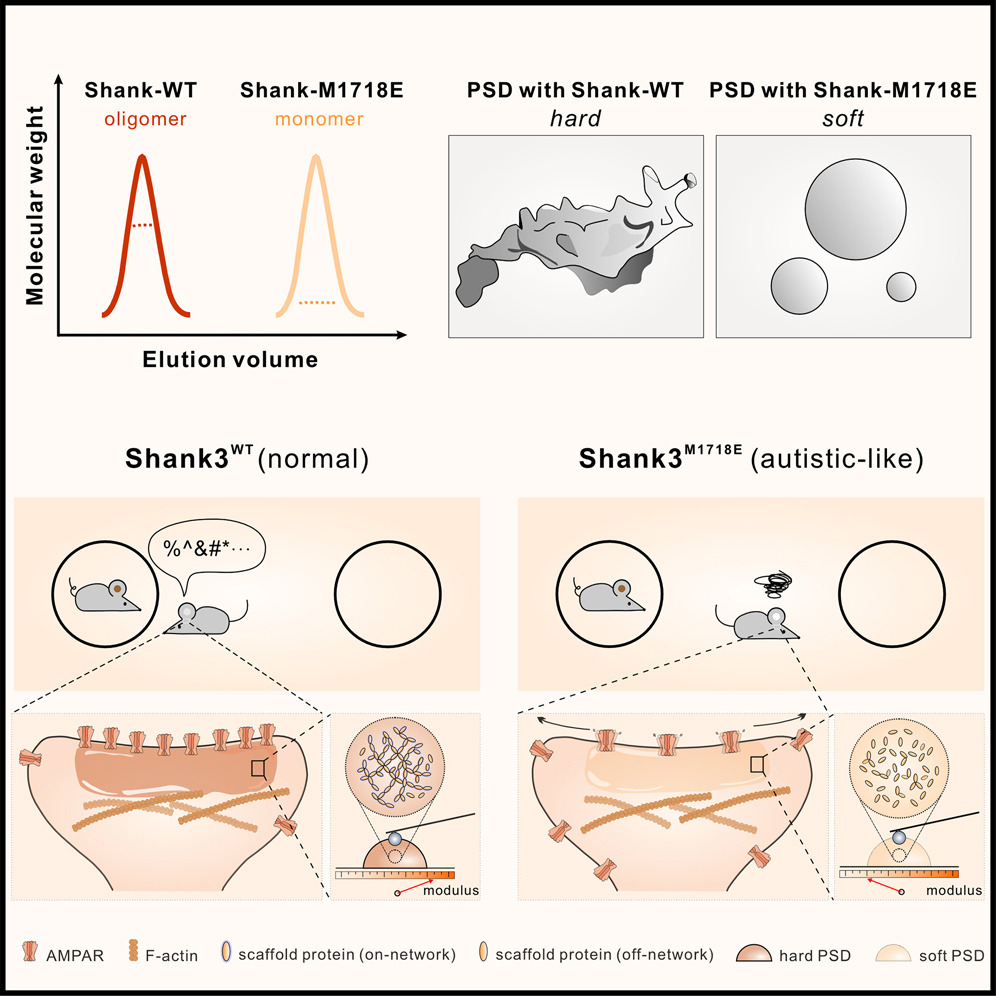Inhibitory postsynaptic density from the lens of phase separation
2022.02.22Bai, G., & Zhang, M. (2022). Oxford Open Neuroscience, 1
To faithfully transmit and decode signals released from presynaptic termini, postsynaptic compartments of neuronal synapses deploy hundreds of various proteins. In addition to distinct sets of proteins, excitatory and inhibitory postsynaptic apparatuses display very different organization features and regulatory properties. Decades of extensive studies have generated a wealth of knowledge on the molecular composition, assembly architecture and activity-dependent regulatory mechanisms of excitatory postsynaptic compartments. In comparison, our understanding of the inhibitory postsynaptic apparatus trails behind. Recent studies have demonstrated that phase separation is a new paradigm underlying the formation and plasticity of both excitatory and inhibitory postsynaptic molecular assemblies. In this review, we discuss molecular composition, organizational and regulatory features of inhibitory postsynaptic densities through the lens of the phase separation concept and in comparison with the excitatory postsynaptic densities.
- Recommend
-
2025-10-22
IQSEC2/BRAG1 may modulate postsynaptic density assembly through Ca2+-induced phase separation.
-
2025-08-22

Shank3 oligomerization governs material properties of the postsynaptic density condensate and synaptic plasticity.
-
2025-08-21
Modulating synaptic glutamate receptors by targeting network nodes of the postsynaptic density condensate.
-
2025-08-19
Current practices in the study of biomolecular condensates: a community comment.
-
2025-06-10
Phase separation instead of binding strength determines target specificities of MAGUKs.

